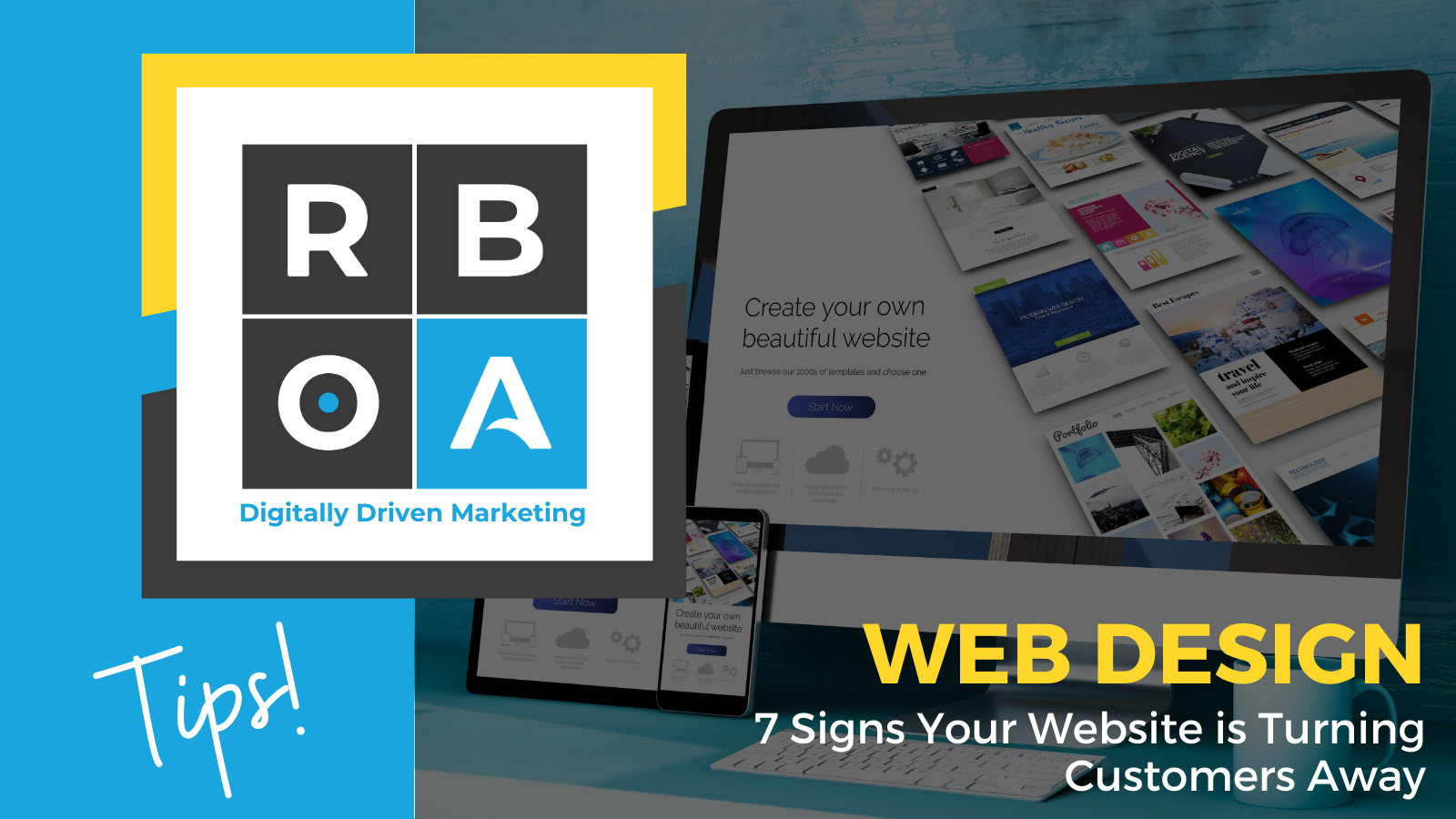Summary: If your website is slow, outdated, or hard to use, you’re losing customers before they ever reach you. The biggest website mistakes include slow load times, confusing navigation, poor mobile experience, weak calls-to-action, outdated design, cluttered content, and a lack of local SEO. To fix them, focus on speed, modern design, mobile responsiveness, clear CTAs, scannable content, and strong local visibility. Updating your site every 2–3 years and keeping SEO fresh helps you attract more visitors, convert more leads, and stay competitive.
Your website is often the first impression people have of your business. But instead of attracting customers, it might be quietly pushing them away. Think of it like walking into a store where the lights flicker, the aisles are confusing, and no one’s there to help—you probably wouldn’t stick around. The same thing happens online.
Here are seven telltale signs your website might be costing you leads, members, or donors, and what to do about it.
1. Slow Load Times
Patience online is thin. If your site takes more than three seconds to load, you’re already losing visitors. People expect speed, and search engines do too; Google ranks faster sites higher in search results.
Imagine pulling up to a restaurant, but the doors don’t open for a few minutes. Most people would leave. That’s what a slow website feels like. Compress images, minimize unnecessary code, and consider a more efficient hosting solution to provide your visitors with a quick and seamless experience.
2. Confusing Navigation
If people can’t find what they need within a couple of clicks, they’ll leave frustrated. Overly complex menus or hidden links make users feel lost.
Your navigation should work like a well-marked highway, not a maze. Keep menus clear, use familiar terms (such as “About,” “Services,” and “Contact”), and create logical pathways that guide visitors to the most important actions, whether that’s signing up, donating, or making a purchase.
3. Outdated Design
First impressions matter. An outdated design makes visitors wonder if your business is active, professional, or trustworthy. Think of it as walking into an office with peeling paint and old furniture.
Modern design doesn’t mean flashy; it means clean, mobile-friendly, and aligned with your brand. Updating your look tells customers you’re current and invested in your business.
4. Poor Mobile Experience
More than half of all web traffic comes from mobile devices. If your site isn’t optimized for phones and tablets, you’re cutting your audience in half.
Picture trying to read a menu at a restaurant, but the print is so small you have to squint and zoom in. That’s what a non-mobile-friendly website feels like. Responsive design ensures your site looks great and functions correctly, no matter the device.
5. Weak Calls-to-Action (CTAs)
A visitor might love your site but still leave if they don’t know what to do next. Weak or missing CTAs are like ending a sales pitch without asking for the sale.
Use strong, clear action steps: “Donate Now,” “Schedule a Consultation,” “Join Today.” Place them where visitors naturally pause, at the end of sections, in headers, or as sticky buttons.
6. Cluttered or Hard-to-Read Content
Walls of text, tiny fonts, or poor color contrast can cause people to click away quickly. If your content isn’t scannable and inviting, it doesn’t matter how good your message is.
Think of your website as a conversation, not a textbook. Use short paragraphs, headings, bullet points, and visuals to break up the content. Make sure your colors and fonts are easy on the eyes.
7. Lack of Local SEO & GEO Optimization
If your website doesn’t show up when someone nearby searches for your services, you’re missing out on ready-to-buy customers. Even worse, if your site isn’t optimized for voice assistants like Siri or Alexa, you’re invisible to people searching hands-free.
This is like owning the best coffee shop in town, but not having it listed on the map. Local SEO (using your city, region, and neighborhood keywords) and Generative Engine Optimization (writing content that answers common questions) help you get found.
The Wrap
A bad website doesn’t just harm your image; it also harms your business. The good news? Each of these issues can be resolved. By speeding up the process, modernizing your design, clarifying your content, and optimizing for both people and search engines, you transform your website into a powerful tool that attracts and retains customers.
If you’re unsure where your site stands, it may be time for a digital check-up. The right changes could mean more traffic, stronger engagement, and measurable growth for your business, association, or nonprofit.
RBOA is a digital marketing agency with a 40-year legacy of creativity, innovative strategy, and fresh thinking that delivers award-winning communications and successful results. We provide clients with a unique, omnichannel blend of advertising, social media, digital marketing, and web design services.
Want to work with a team that brings both left-brain strategy and right-brain creativity to the table? Schedule a free exploratory call to learn how we can help your brand grow.
FAQs
- How often should I update my website? At least every 2–3 years for design and continuously for content and SEO.
- What’s the easiest fix for a slow website? Start by compressing images and cleaning up unused plugins or scripts.
- Why does mobile optimization matter so much? Most people browse on their phones, and Google prioritizes mobile-friendly sites in search results.
- How can I tell if my CTAs are working? Check analytics for click-through rates on buttons and links. If they’re low, your CTAs need to be reworked.
- What’s the difference between SEO and AEO? SEO helps you rank higher in search engines, while AEO focuses on optimizing for voice assistants and direct answers.

